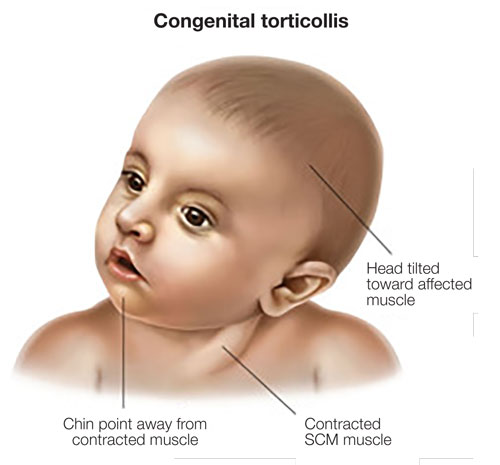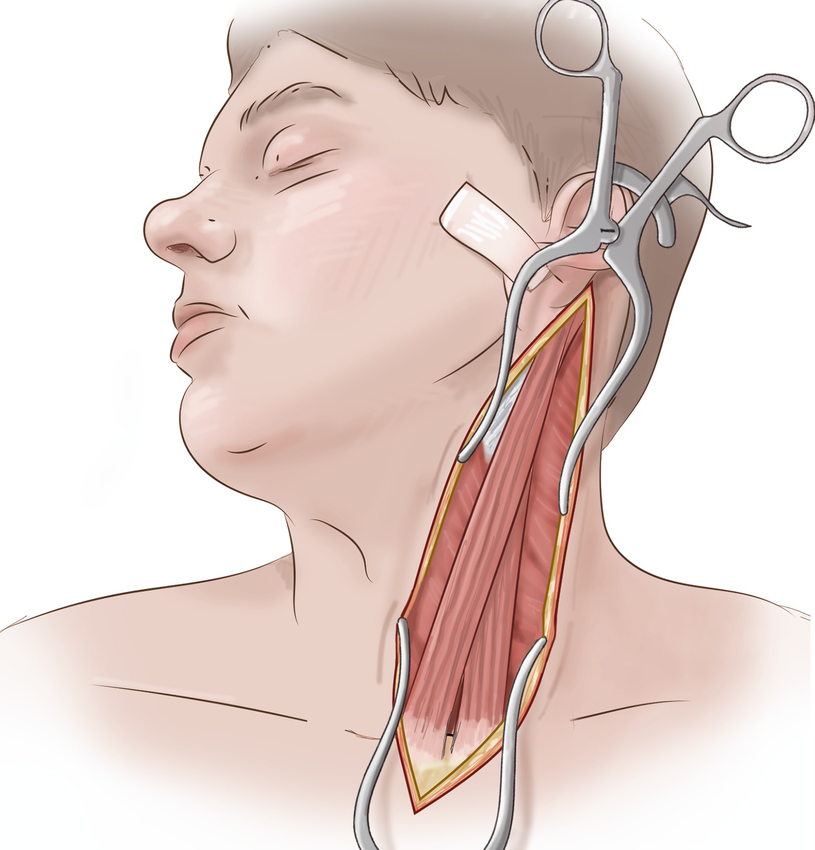Congenital torticollis is basically a wry or twisted neck. It is such a derogatory condition where a baby is unable to shake his/her head to another side after they have tilted it to one side. Epidemiology has elucidated that the overall estimated incidence of a twisted neck is less than 1% of all infants.
The rate of Congenital torticollis might be inferior as 0.3% in straightforward deliveries with vertex position. Despite that, the rate could be higher as 1.8% in patients with breech presentation.
In the case of Congenital Torticollis, the muscle gets prolonged on the side of the neck. Thus, the sternocleidomastoid muscle gets stiff and concise. In this article, we will take a glance at the cause, symptoms, treatment of Congenital torticollis!
Description:
Congenital torticollis may be present by birth or gradually unfolds soon after. It generally takes a minimum of 6-8 weeks to reveal. Most importantly when a baby starts to achieve more control over his/her head and neck.
According to statistics, some infants with this disorder possess developmental dysplasia of the hip. In this case, the head of the thighbone is unable to seize steadily in the hip socket. Apart from that, torticollis might also develop later in childhood or even in an adult state.
Therefore, it is designated as ‘inherent’ torticollis and may be combined with innumerable conditions that need specialized treatment.


Cause of Congenital torticollis:
Every human being possesses a prolonged muscle on both sides of the neck that is associated with the ear and collarbone. This is referred to as sternocleidomastoid or SCM.
Now, a baby with Congenital torticollis has this clingy muscle that is abated on one side. The question arises, why does the muscle get shortened? In that case, the baby might be in the breech position in the uterus. That provided additional pressure on one side of the baby’s head, which causes the SCM to get rigid.
In another case, if a doctor is using a vacuum device or any forceps during child delivery, those also might cause severe pressure on the baby’s SCM.


Symptoms:
Such a pernicious condition might not be observed for the first 6 to 8 weeks in your baby. The symptoms get more prominent when a baby is gradually growing up and gaining more power.
Symptoms of Congenital torticollis are illustrated below:
- The baby’s head gets tilted to the left side whereas the chin is on the opposite side. According to a study, almost 75% of infants’ right side gets affected.
- Due to the rigid muscle, his/her head is unable to move right and left or up and down swiftly.
- A baby with torticollis often has a malleable lump on the neck muscle. This is not at all detrimental and usually goes away within 6 months.
- The baby always opts for looking over the shoulder at you. Due to his wry neck, his eyes will not follow you.
- He will feel inconvenient while breastfeeding on one side and prefers to be fed on a certain side only.
- He/she might start achieving a flat head on a certain side or maybe on both sides. This is known as ‘Positional Plagiocephaly’.
- Your baby might often work hard to move toward you. He strives to turn his head all the way. But he is unable to do so as the movement is tough.
Treatment:
Non-surgical Treatment:
Well, a certain exercise program is referred to as the standard treatment for this disorder. Such exercise is generally performed to extend the sternocleidomastoid muscle. This authentic stretching exercise involves tilting the baby’s neck from one side to another.
Thus, the chin touches each shoulder. Moreover, this process of turning the head brings the ear on the unhampered areas down to the shoulder. It needs to perform myriad times in a day. There are also other tactics that you can execute at home:
➢ To allure babies, place their favorite toys on one side and let them see it by themselves.
➢ Lay the baby upon his/her tummy for some amounts of time to strengthen the neck muscles.
Surgical Treatment:
If the various non-surgical treatment processes are ineffective, your doctor will prescribe to undergo a surgical treatment. More than 10% of babies with torticollis need surgery to get rid of the wry neck. This surgical treatment is often performed once the child reaches preschool years. The procedure of surgical treatment is quite lengthy to curtail the sternocleidomastoid muscle. After completion of the surgery, you may take your child home without any dilemma.
Conclusion:
Therefore, Congenital Muscular Torticollis is not a severe disorder where a doctor cannot perform any treatment to cure your baby. But it is highly recommended to start the treatment quickly after understanding that your baby has these issues with the neck. A rigorous treatment can beautifully cut down all the hassles and your baby can lead a normal life.


